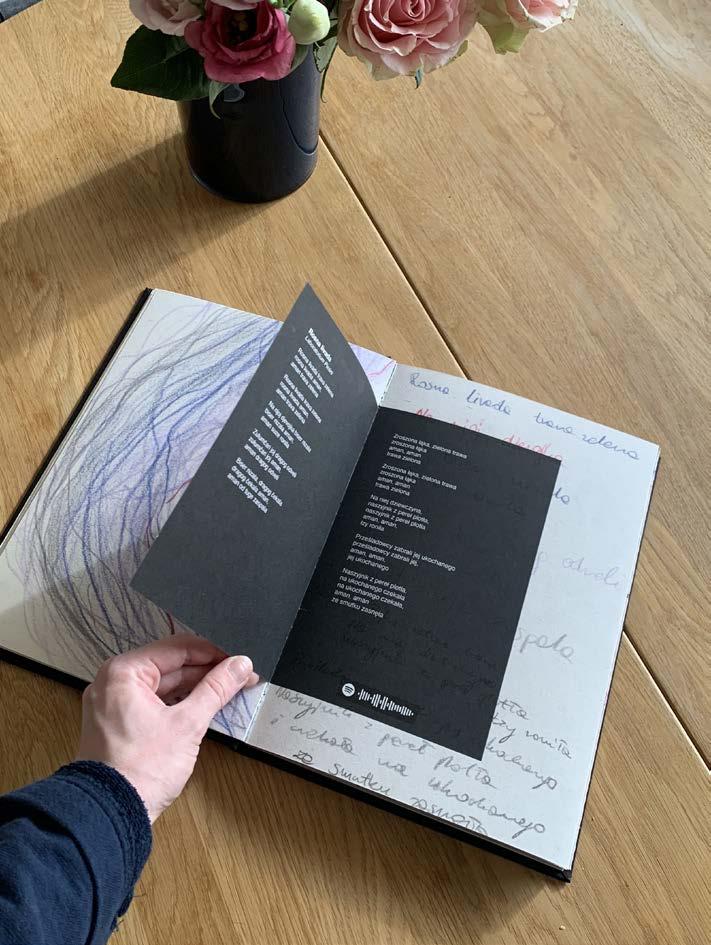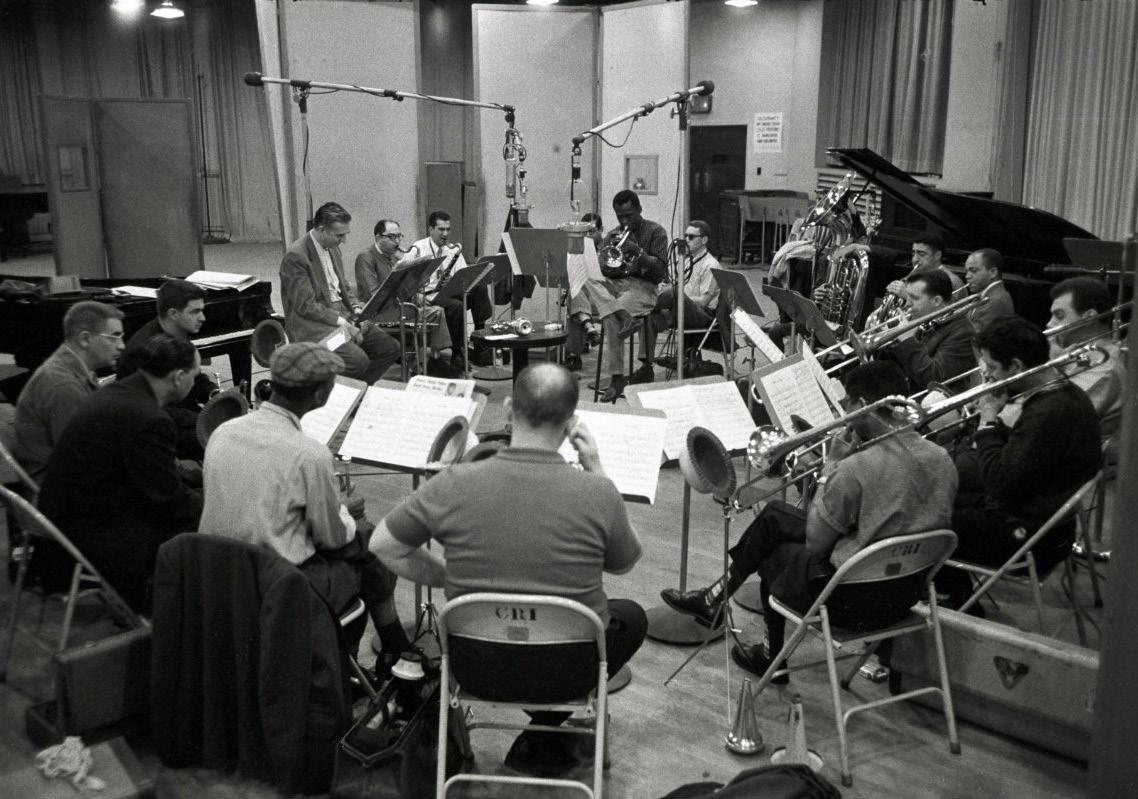
o mnie
Magister sztuki
Absolwentka Grafiki na ASP w Warszawie
Specjalizacja: Ilustracja i Grafika Wydawnicza
Ocena: celująca
Aneks: Pracownia Malarstwa
Głowa pełna pomysłów, kreatywność, nigdy niezaspokojona ciekawość świata i ciągła potrzeba eksploracji i rozwoju. Otwartość i inteligencja emocjonalna. Marzycielka oraz nieustanna kreatorka. Samodzielność i decyzyjność, wytrwałe dążenie do celu.
Oraz,
Absolwentka Licencjackich Studiów na Wydziale Architektury Wnętrz na warszawskiej
ASP.
tel. +48 505930144
weronika.blaz@gmail.com
IG @vero.doodle

Picture book „To, co tracimy”
Projekt dyplomowy zrealizowany w pracowni Ilustracji i Grafiki Wydawniczej na warszawkiej ASP.
Picture book jest zbiorem ilustracji 10 wywiadów/rozmów o szeroko rozumianym doświadczeniu straty. Rozmowy przeplatają się z ilustracjami 9 utworów o tej samej tematyce. Książka została tak zaprojektowana, aby umożliwiała kontemplacje i zmierzenie się z własnym, często bardzo trudnym, doświadczeniem straty. Do ilustracji utworów został dołączony ich tekst oraz kod QR, który umożliwia przeglądanie obrazów wraz z dźwiękiem, urozmaicając refleksje i umożliwiając jeszcze bardziej wnikliwą podróż w głąb samego siebie.



Książka zawiera dwa rodzaje rozkładówek; pierwsza, z wywiadami, gdzie rozkłada się zakładka, a w środku znajduje się zdjęcie pustych rąk rozmówcy (jako symbol straty i anonimowe przedstawienie rozmówcy); oraz drugi rodzaj rozkładówki, z ilustracjami utworów, o tej samej tematyce, z wewnętrzną stroną, która kryje w sobie tekst ilustrowanego utworu oraz kod QR, umożliwiający słuchanie muzyki, podczas oglądania.
Okładka została zrobiona z płóciennej tkaniny, a tytuł został wydrukowany techniką sitodruku.
Papier użyty do druku, pozwala na uzyskanie efektu szkicownika, odbiorca ma wrażenie, jakby przeglądał oryginalny szkicownik. Wymiary: 287mm x 200 mm















Broszura edukacyjna „Noc kupały”
Projekt ma na celu edukowanie i rozpowszechnianie wiedzy na temat dawnych słowiańskich tradycji, z których wywodzi się nasza kultura.
Ludowa mądrość naszych przodków i sposób celebracji najdłuższej nocy w roku, mogą być niezwykłą inspiracją w dzisijszym zabieganym świecie, często pozbawionym głębszego sensu.
Broszura została zaprojektowana tak, aby można było ją wygodnie pzeglądać jak książkę, a po rozłożeniu, na rewersie, znajduje się plakat.












 Okładka, 32 x 11 cm
Rozkładówka I, 32 x 11 cm
Rozkładówka II, 32 x 11 cm
Okładka, 32 x 11 cm
Rozkładówka I, 32 x 11 cm
Rozkładówka II, 32 x 11 cm
Broszura edukacyjna „Miles Davis”
Broszura jest zbiorem podstawowych informacji o wybitnym jazzowym artyście Miles’ie Davis’ie.
Sposób złożenia broszury jest nieoczywisty i dodatkowo intryguję odbiorcę i zachęca do czytania.

•
•
•
•
•
•
•
discography
The following list intends to outline Davis’ major works, particularly studio albums. A more comprehensive discography can be found at the main article.






discography
The New Sounds (1951)
Young Man with a Horn (1952)
Blue Period (1953)
The Compositions of Al Cohn (1953)
• Miles Davis Volume 2 (1954)
• Miles Davis Volume 3 (1954)
• Miles Davis Quintet (1954)
• With Sonny Rollins (1954)
• Miles Davis Quartet (1954)
All-Stars, Volume 1 (1955)
All-Stars, Volume 2 (1955)
All Star Sextet (1955)
The Musings of Miles (1955)
Blue Moods (1955)
• Dig (1956)
• Miles: The New Miles Davis Quintet (1956)
• Quintet/Sextet (1956)
• Collectors’ Items (1956)
• Birth of the Cool (1957)
• ‚Round About Midnight (1957)
Walkin’ (1957)
Cookin’ (1957)
Miles Ahead (1957)
Relaxin’ (1958)
• Milestones (1958)
• Miles Davis and the Modern Jazz Giants (1959)
• Porgy and Bess (1959)

Miles Dewey Davis III (May 26, 1926 – September 28, 1991) was an American trumpeter, bandleader, and composer. He is among the most influential and acclaimed figures in the history of jazz and 20th-century music. Davis adopted a variety of musical directions in a five-decade career that kept him at the forefront of many major stylistic developments in jazz.
Born in Alton, Illinois, and raised in East St. Louis, Davis left to study at Juilliard in New York City, before dropping out and making his professional debut as member of saxophonist Charlie Parker’s bebop quintet from 1944 to 1948. Shortly after, he recorded the Birth of the Cool sessions for Capitol Records, which were instrumental to the development of cool jazz. In the early 1950s, Davis recorded some of the earliest hard bop music while on Prestige Records but did so haphazardly due to heroin addiction. After a widely acclaimed comeback performance at the Newport Jazz Festival, he signed a long-term contract with Columbia Records and recorded the album ‚Round About Midnight in 1955. It was his first work with saxophonist John Coltrane and bassist Paul Chambers, key members of the sextet he led into the early 1960s. During this period, he alternated between orchestral jazz collaborations with arranger Gil Evans, such as the Spanish music-influenced Sketches of Spain (1960), and band recordings, such as Milestones (1958) and Kind of Blue (1959). The latter recording remains one of the most popular jazz albums of all time, having sold over five million copies in the U.S.
Davis made several line-up changes while recording Someday My Prince Will Come (1961), his 1961 Blackhawk concerts, and Seven Steps to Heaven (1963), another mainstream success that introduced bassist Ron Carter, pianist Herbie Hancock, and drummer Tony Williams. After adding saxophonist Wayne Shorter to his new quintet in 1964, Davis led them on series of more abstract recordings often composed by the band members, helping pioneer the post-bop genre with albums such as E.S.P (1965) and Miles Smiles (1967), before transitioning into his electric period. During the 1970s, he experimented with rock, funk, African rhythms, emerging electronic music technology, and an ever-changing line-up of musicians, including keyboardist Joe Zawinul,

awards
Nagroda Grammy: Hall of Fame
2014, 2001, 2000, ... Relaxin’ with The Miles
Davis Quintet, In a Silent Way, Porgy and Bess,
Nagroda Grammy: Całokształt twórczości
1990
Nagroda Grammy: Najlepsza solowa improwi-
zacja jazzowa
1990, 1987, 1983 Aura, Tutu, We Want Miles
Nagroda Grammy: Najlepszy album dużego zespołu jazzowego
1994, 1990, 1971 Miles & Quincy Live at Montreux, Aura, Bitches Brew
Nagroda Grammy: Najlepsze instrumentalne
wykonanie R&B
1993 Doo-Bop
Nagroda AACTA: Najlepsza muzyka oryginalna
1991 Dingo
Nagroda Grammy: Najlepsza oryginalna kompozycja jazzowa
1961 Sketches of Spain
Porin Award for Best Foreign Jazz Music Album
2002, 1999, 1997, ... Highlights from the Complete Miles Davis at Montreux, Birth of the Cool, Live Around the World, ...
NAACP Image Award: Wybitny album jazz
2016 Miles Davis at Newport 1955–1975: The Bootleg Series Vol. 4

drummer Al Foster, and guitarist John McLaughlin. This period, beginning with Davis’s 1969 studio album In Silent Way and concluding with the 1975 concert recording Agharta, was the most controversial in his career, alienating and challenging many in jazz. His million-selling 1970 record Bitches Brew helped spark a resurgence in the genre’s commercial popularity with jazz fusion as the decade progressed.
After five-year retirement due to poor health, Davis resumed his career in the 1980s, employing younger musicians and pop sounds on albums such as The Man with the Horn (1981) and Tutu (1986). Critics were often unreceptive but the decade gar-
few times he accompanied a singer. Davis on piano with Howard McGhee (trumpet), Joe Albany (pianist, standing) and Brick Fleagle (guitarist, smoking), September 1947 In 1945, he replaced Dizzy Gillespie in Charlie Parker’s quintet. On November 26, Davis participated in several recording sessions as part of Parker’s group Reboppers that also involved Gillespie and Max Roach, displaying hints of the style he would become known for. On Parker’s tune „Now’s the Time”, Davis played a solo that anticipated


Miles Davis is one of the most innovative, influential and acclaimed figures in the history of music.
„Do not fear mistakesthere are none.“
Identyfikacja wizualna marki Vero - natural craft
Koncepcja brandingu, projekty etykiet na świece sojowe, kadzidła naturalne i inne.
Kolorystyka i foma wyraża charakter marki oraz nawiązuje do naturalności produktów.




Malarstwo (aneks dyplomowy)
Cykl obrazów „To, co tracimy - moja opowieść”, stanowiący uzupełnienie do dyplomu opowiadający o moim indywidualnym doświadczeniu straty.
Akryl na płótnie
120 cm x 150 cm
120 cm x 140 cm


 #4 akryl na płótnie 120 x 140 cm
#4 akryl na płótnie 120 x 140 cm
 #7
akryl na płótnie 120 x 150 cm
#7
akryl na płótnie 120 x 150 cm
 #8
akryl na płótnie 120 x 150 cm
#8
akryl na płótnie 120 x 150 cm

